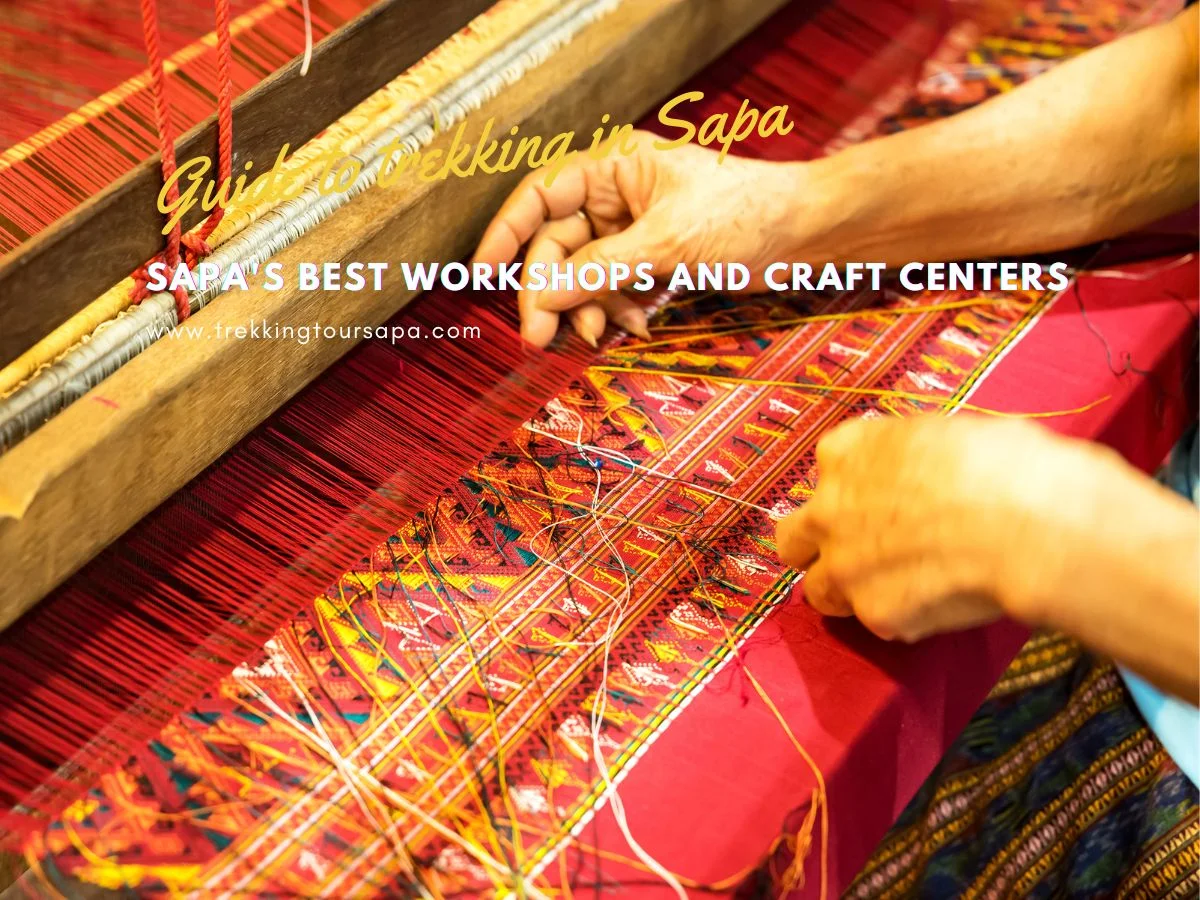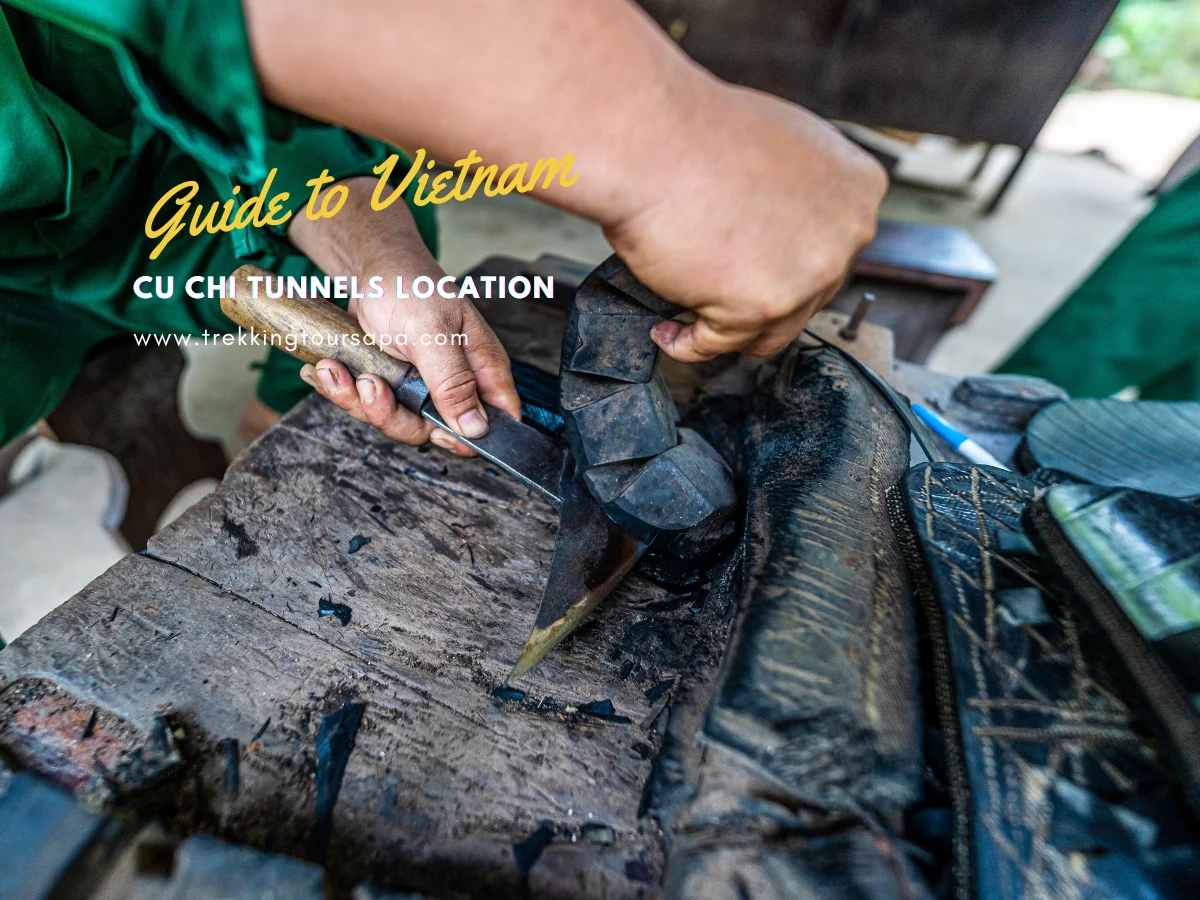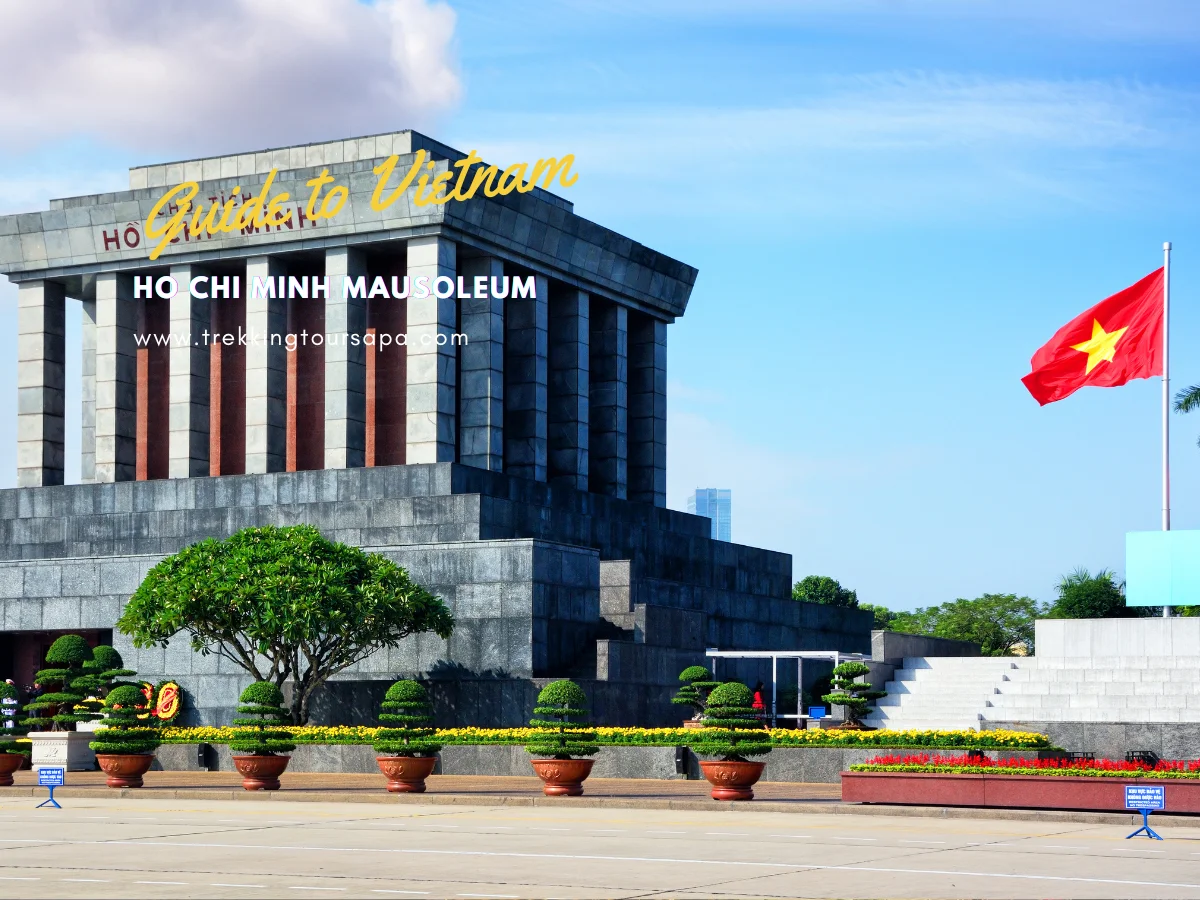Are you a traveler who craves to escape the hustle and bustle of city life? Do you long to immerse yourself in the rich culture and tradition of a foreign land? If so, Sapa, Vietnam may be just the destination for you. Nestled in the heart of northern Vietnam, Sapa is a scenic mountain town that boasts breathtaking views, diverse ethnic groups, and an array of artisanal workshops and craft centers.
From traditional handcrafted textiles to intricate silverware designs, Sapa offers travelers an opportunity to witness firsthand the skillful craftsmanship of local artisans. Whether you’re looking to purchase one-of-a-kind souvenirs or simply want to learn more about the cultural practices that have been passed down from generation to generation, we’ve compiled a list of Sapa’s best workshops and craft centers for your convenience. So grab your backpack and get ready for an adventure that promises not only freedom from your daily routine but also a deep appreciation for the intricacies of Vietnamese artistry.
Table of Contents
ToggleIndigo Sapa
If you’re into unique textiles and want to learn about the traditional dyeing process, Indigo Sapa is where you should be heading. This workshop offers a hands-on experience in indigo dyeing techniques that have been used for centuries by the Hmong people. The skilled artisans at Indigo Sapa will guide you through the process of creating your own custom-made fabric using natural indigo dyes.
Indigo Sapa also showcases beautiful Hmong batik designs, which are created using wax-resist dyeing techniques. These intricate patterns are a hallmark of Hmong culture and represent their connection to nature and their heritage. After learning about these ancient textile traditions at Indigo Sapa, head over to one of the many Hmong handicrafts centers in Sapa to witness even more stunning examples of this fascinating art form.
Hmong Handicrafts
The Hmong artisans’ intricate embroidery and vibrant colors are like a symphony of creativity, weaving together the rich cultural history of their people. As you enter the Hmong Handicrafts workshop in Sapa, you’ll be greeted by a burst of color from their exquisite textiles. The shop is filled with various handmade items, from bags to clothing to wall hangings, all showcasing the stunning Hmong embroidery and batik textiles.
To give you an idea of what’s in store for you at Hmong Handicrafts, here are three sub-lists that highlight the exceptional craftsmanship and beauty of their creations:
- The embroidered patterns tell stories: Each piece made by the Hmong artisans has a unique story behind it. They use traditional motifs to depict legends or daily life activities.
- The hand-dyed colors are awe-inspiring: The Batik technique requires great skill and patience as each design is drawn with hot wax before being dipped into dye baths multiple times. This process creates one-of-a-kind hues that will leave you breathless.
- Quality materials make for durable products: At Hmong Handicrafts, they use only high-quality fabrics such as hemp or cotton which ensures longevity and sustainability.
As you exit this wonderland of creativity, your heart will be filled with joy knowing that your purchase supports local communities while also owning a unique piece of artistry. Next up on your journey through Sapa‘s best workshops and craft centers is ‘Sapa Silver’.
Sapa Silver
You’ll be mesmerized by the intricate designs and expert craftsmanship of the silver jewelry at Sapa Silver, a testament to the Hmong people’s creativity and dedication. The workshop offers visitors an opportunity to witness firsthand the crafting techniques that have been passed down through generations. Each piece of jewelry is unique, reflecting not only the skill of the artisan but also the cultural significance attached to it.
The Hmong people are known for their love of silver, which they believe has protective qualities against evil spirits. The use of silver in jewelry-making is deeply ingrained in their culture and is often used as a form of personal adornment or as part of traditional costumes worn during festivals and ceremonies. At Sapa Silver, you can witness this tradition come to life through stunning pieces that showcase both modern and traditional designs. With each purchase, you not only take home a beautiful piece but also support local artisans who continue to preserve their heritage through their craft.
As you leave Sapa Silver with your new treasure, don’t forget to make your way over to Lao Chai Pottery Village where you’ll discover another unique aspect of Sapa’s creative spirit.
Lao Chai Pottery Village
Don’t miss out on experiencing the raw beauty and artistic talent of Lao Chai Pottery Village, where you’ll be inspired by the intricate designs and unique creations. Visit Lao Chai pottery village for a hands-on experience that will allow you to explore the unique pottery creations made by local artisans.
When you arrive at Lao Chai Pottery Village, take a moment to soak in the tranquil surroundings before immersing yourself in the world of ceramic artistry. Here are some activities that you can enjoy during your visit:
- Take a guided tour of the village to learn about the history and techniques used in making pottery.
- Get your hands dirty with a pottery-making workshop where you can create your own masterpiece under expert guidance.
- Browse through the various shops selling handmade ceramics, from functional pieces like plates and bowls to decorative items such as vases and figurines.
After delving into the world of pottery at Lao Chai Pottery Village, it’s time to move on to another exciting destination – Sapa O’Chau.
Sapa O’Chau
So, you think you’ve seen it all with your pottery-making skills? Well, get ready to be blown away by the cultural immersion and sustainable tourism that Sapa O’Chau has to offer. This non-profit organization is dedicated to providing educational opportunities for the local Hmong and Dao ethnic minority groups in Vietnam’s northern highlands. By participating in their workshops, you’ll not only learn traditional weaving and embroidery techniques but also support the community’s economic growth.
Sapa O’Chau is more than just a craft center; it’s an authentic experience that connects travelers with the local culture. You’ll have the chance to visit nearby villages, hike through rice terraces, and even stay with a host family. All proceeds from their tours and workshops go towards funding education programs such as scholarships, language classes, and vocational training for disadvantaged youth. So why not take a break from your typical tourist itinerary and make a difference while having fun at Sapa O’Chau?
Now that you’ve immersed yourself in Sapa O’Chau’s cultural richness, it’s time to explore another village known for its handicrafts: Ta Van Village. Here you’ll discover traditional blacksmithing techniques as well as indigo dyeing methods used by the Giay people. Stay tuned for some hands-on experiences!
Ta Van Village
If you’re looking for an authentic cultural experience in Sapa, Ta Van Village is a must-visit destination. Here, you can meet local artisans and learn about their craft, whether it be weaving, embroidery, or blacksmithing. You’ll also have the opportunity to purchase handmade souvenirs and gifts directly from these talented artists, supporting their livelihoods while taking home a unique keepsake of your travels.
Meet Local Artisans and Learn about their Craft
Get to know the talented local artisans and discover their unique crafts firsthand. Take a break from your usual tourist activities and dive into the vibrant culture of Sapa by visiting workshops and craft centers run by local artists. You will have the opportunity to interview with artisans who are passionate about preserving traditional techniques while creating contemporary designs.
This kind of cultural exchange experience allows you to learn about the history and significance behind each piece, as well as gain insight into the artisan’s personal story. Not only will you leave with a new appreciation for handmade crafts, but also with a deeper understanding of Sapa’s rich cultural heritage. Don’t miss out on this chance to connect with locals in a meaningful way!
And when it’s time for souvenirs or gifts, purchasing handmade items from these skilled artisans is not only supporting their livelihoods but also taking home something truly special that can’t be found anywhere else.
Purchase Handmade Souvenirs and Gifts
Take advantage of the opportunity to acquire unique and personalized mementos by supporting local artisans and their exquisite handcrafted creations. When it comes to finding authenticity, supporting local artisans is key. Sapa is home to a variety of craft centers and workshops that offer an array of handmade souvenirs and gifts, ranging from traditional textiles to intricate silver jewelry.
Here are three must-visit places for purchasing one-of-a-kind treasures:
- Hmong Sisters: This boutique shop features handwoven textiles made by Hmong women using natural dyes and traditional techniques. Each piece tells a story through its intricate patterns.
- Sapa O’Chau: This social enterprise provides vocational training for ethnic minority youth in the area, who create beautiful handicrafts such as bags, scarves, and accessories. All profits go towards funding education programs for disadvantaged children.
- Silver Hand: This family-run business specializes in silver jewelry made using age-old techniques passed down through generations of craftsmen. From delicate earrings to statement necklaces, each piece is unique and reflects the rich cultural heritage of the region.
As you wander through these shops, take your time exploring their collections and chatting with the friendly artisans behind them. You never know what hidden treasure you might discover! And if you’re looking for even more shopping opportunities, the bustling Sapa Ethnic Market awaits just around the corner…
Sapa Ethnic Market
The bustling Ethnic Market offers a cultural immersion like no other in Sapa. As you walk through the vibrant stalls, you’ll be surrounded by traditional textiles, colorful handicrafts, and savory local delicacies that are unique to the region’s ethnic tribes. The market is a haven for bargain hunters who can haggle with vendors for the best deals on souvenirs and gifts.
To make the most of your visit to the Sapa Ethnic Market, here are some bargaining tips. First, always start with a low offer and gradually work your way up. Second, don’t be afraid to walk away if you feel that the price is too high. Third, be respectful and polite when bargaining as it’s an important part of the culture. With these tips in mind, you’re sure to leave with some amazing treasures from this vibrant marketplace.
Now that you’ve experienced the hustle and bustle of the Sapa Ethnic Market, it’s time to take a step back and explore one of Sapa’s most iconic landmarks – the Sapa Stone Church.
Sapa Stone Church
You can’t miss the beautiful Sapa Stone Church, known for its stunning architecture and breathtaking views of the surrounding mountains. As you approach the church, you’ll notice that it stands out from its surroundings with its French Gothic architecture style. The stone walls and stained-glass windows are a testament to the skill and craftsmanship of the locals who built this magnificent structure.
The Sapa Stone Church has significant religious importance for both locals and tourists alike. Here are three reasons why it’s worth a visit:
- The church is over 100 years old, making it one of the oldest buildings in Sapa.
- In addition to being an active place of worship for Catholics, it also serves as a cultural center for ethnic minorities in the area.
- The stunning views from outside the church make it an ideal spot for taking memorable photos or just enjoying some quiet time amidst nature’s beauty.
Sapa’s Best Workshops And Craft Centers Frequently Asked Questions
What is the history of indigo dyeing in Sapa?
Indigo farming has been a part of Sapa’s history for centuries, with the Hmong people being the pioneers in this field. They used natural dye techniques to create unique designs on their clothing and textiles. The process involved harvesting indigo leaves from their farms, fermenting them for several days, and then dyeing the fabric by dipping it repeatedly into the indigo vat. This traditional practice is still prevalent in some parts of Sapa today, with local communities showcasing their skills through workshops and demonstrations. The beauty of indigo dyeing lies in its organic nature, as it produces vibrant shades that are long-lasting and eco-friendly. If you’re looking for an authentic cultural experience that is deeply rooted in tradition, exploring Sapa’s indigo farming practices should be at the top of your list.
What types of materials are used in Hmong handicrafts?
To truly appreciate Hmong handicrafts, it’s important to understand the materials and techniques used in their creation. The Hmong people have a rich history of weaving intricate patterns into their textiles, often using natural fibers like cotton, hemp, and silk. What sets these crafts apart is the use of traditional dyeing methods that rely on sustainable practices. Natural dyes extracted from plants like indigo or madder root are used to create beautiful shades of blue, red, and pink. This not only results in stunning colors but also supports the sustainability of local ecosystems and promotes the use of environmentally friendly processes. The artistry found in Hmong weaving techniques is truly remarkable and speaks to a desire for freedom through self-expression and creativity.
Can visitors participate in the silver-making process at Sapa Silver?
Imagine stepping into a world of shimmering silver, where you can witness the artistry and skill of experienced craftspeople as they create intricate pieces before your very eyes. At Sapa Silver, visitors are not just spectators – they have the unique opportunity to participate in the silver-making process themselves. From hammering to polishing, every step is carefully guided by expert artisans who share their knowledge and passion for this ancient craft. Whether you’re a seasoned silversmith or a curious traveler eager to learn something new, Sapa Silver is an unforgettable experience that allows you to connect with both the history and future of this timeless art form.
How long has Lao Chai Pottery Village been in operation?
Are you curious about the origins of Lao Chai pottery village? Well, this quaint little village has been in operation for over 100 years! The locals here have perfected their pottery making techniques and are eager to share their knowledge with visitors. From hand-crafting each piece to firing them in traditional kilns, the entire process is a sight to behold. As you wander through the village, you’ll see skilled artisans molding clay into beautiful pieces of art. It’s truly an immersive experience that allows you to witness firsthand how ancient traditions continue to thrive in modern times.
Are there any traditional cultural events or festivals held at Ta Van Village throughout the year?
Looking for a way to truly immerse yourself in the culture of Ta Van Village? You’re in luck! This vibrant community hosts several traditional cultural events and festivals throughout the year. From the Tet Nguyen Dan (Vietnamese New Year) celebrations to the Mid-Autumn Festival, there are plenty of opportunities to experience all that this unique village has to offer. Whether you’re interested in sampling delicious local cuisine or taking part in traditional dances and performances, there’s something for everyone at these lively events. So why not take a break from exploring Sapa’s best workshops and craft centers and join the locals for a truly unforgettable cultural experience?
Conclusion
You’ve just explored some of Sapa’s best workshops and craft centers, immersing yourself in the culture and traditions of the local ethnic groups. From Indigo Sapa’s natural dyeing techniques to Hmong Handicrafts’ intricate embroidery, you’ve witnessed first-hand the passion and skill that goes into each piece.
But more than just shopping for souvenirs, you’ve learned about the importance of preserving these crafts as a means of livelihood for many families in Sapa. By supporting these workshops and artisans, you’re helping to keep their cultural heritage alive. So don’t hesitate to stop by Ta Van Village or Sapa Ethnic Market on your next visit, and take home a piece of Sapa’s rich history with you. And who knows? Maybe one day you’ll even be able to create your own masterpiece at Lao Chai Pottery Village or Sapa Silver. The possibilities are endless when it comes to exploring Sapa’s vibrant arts scene!





